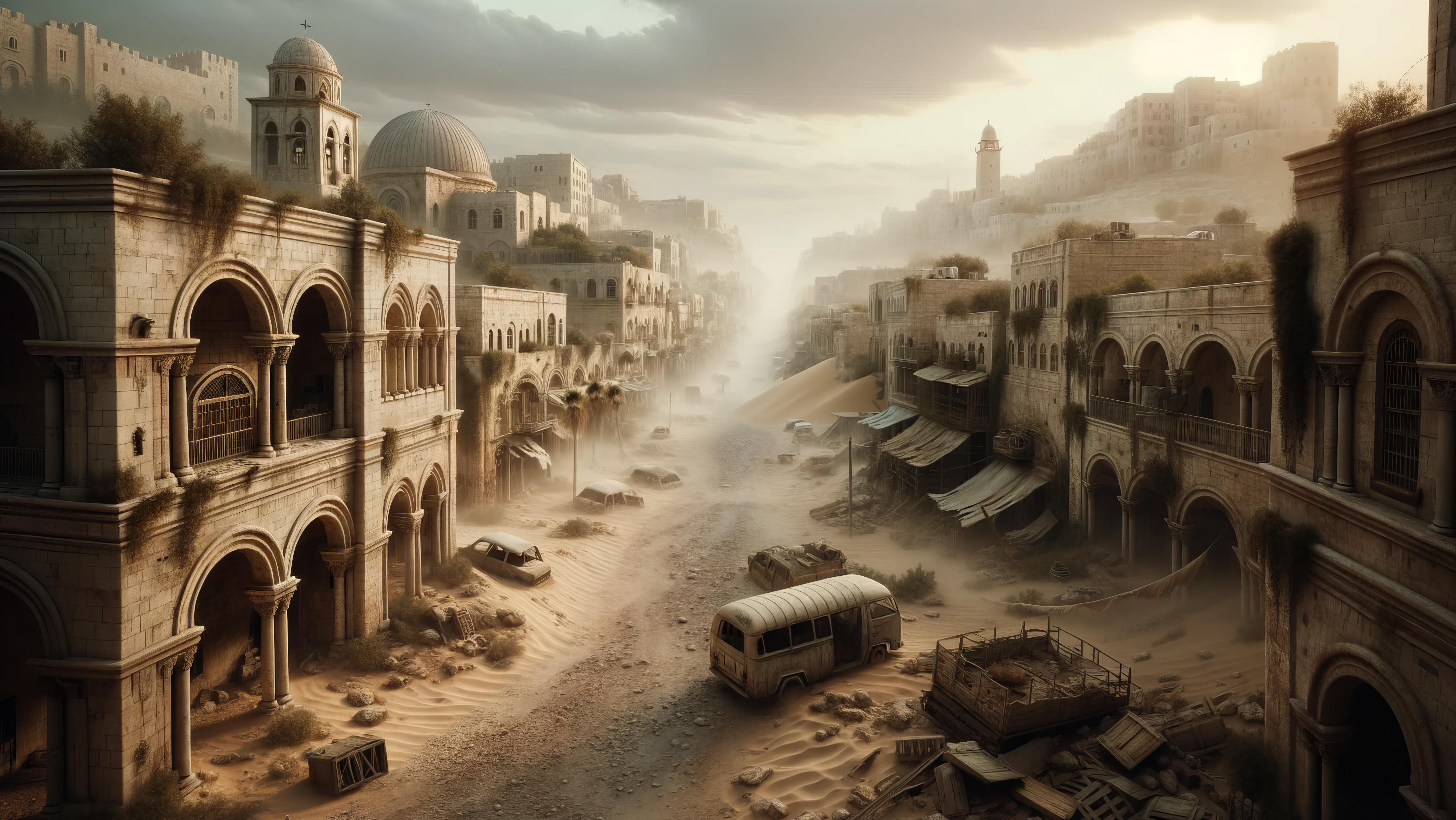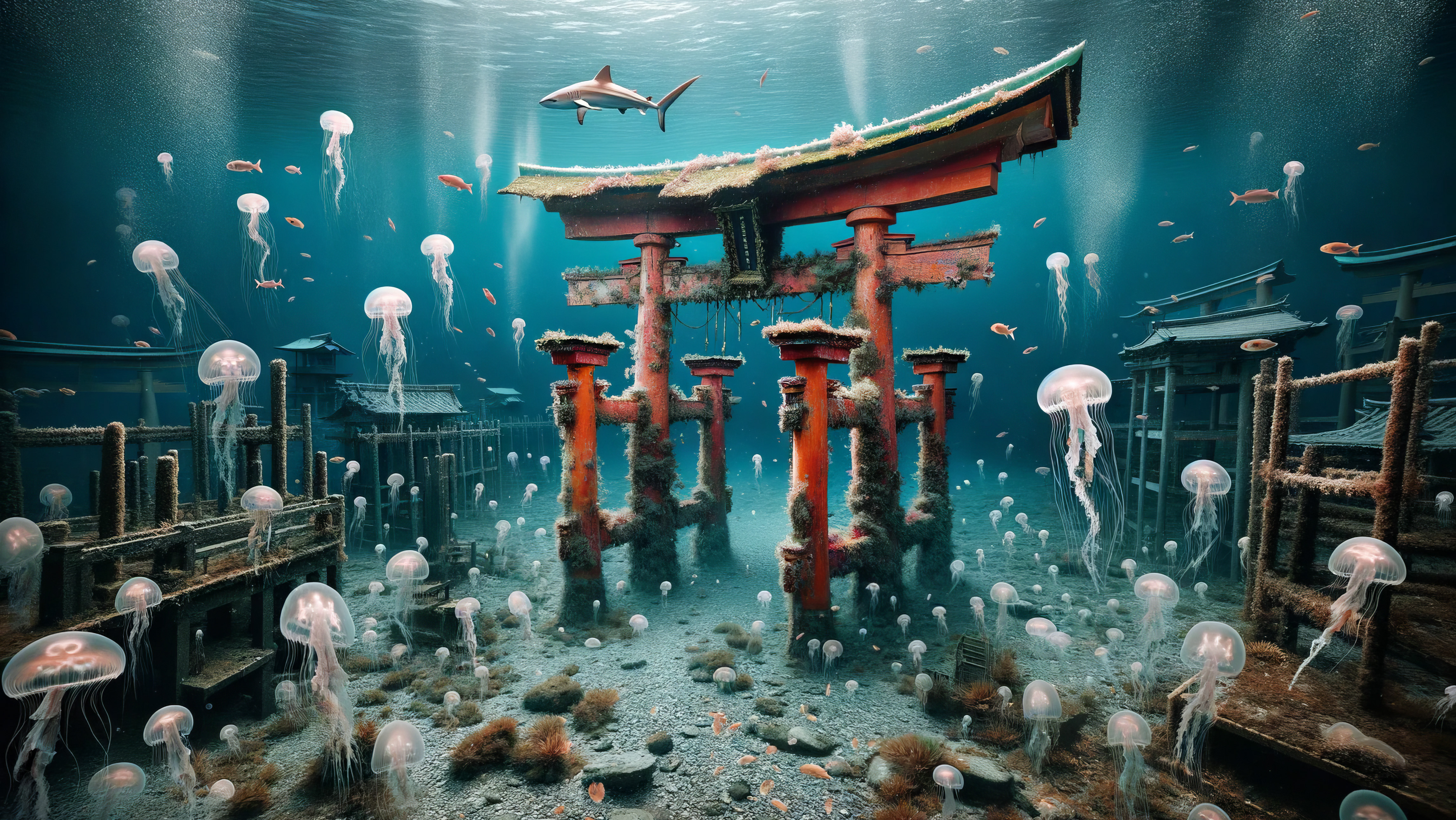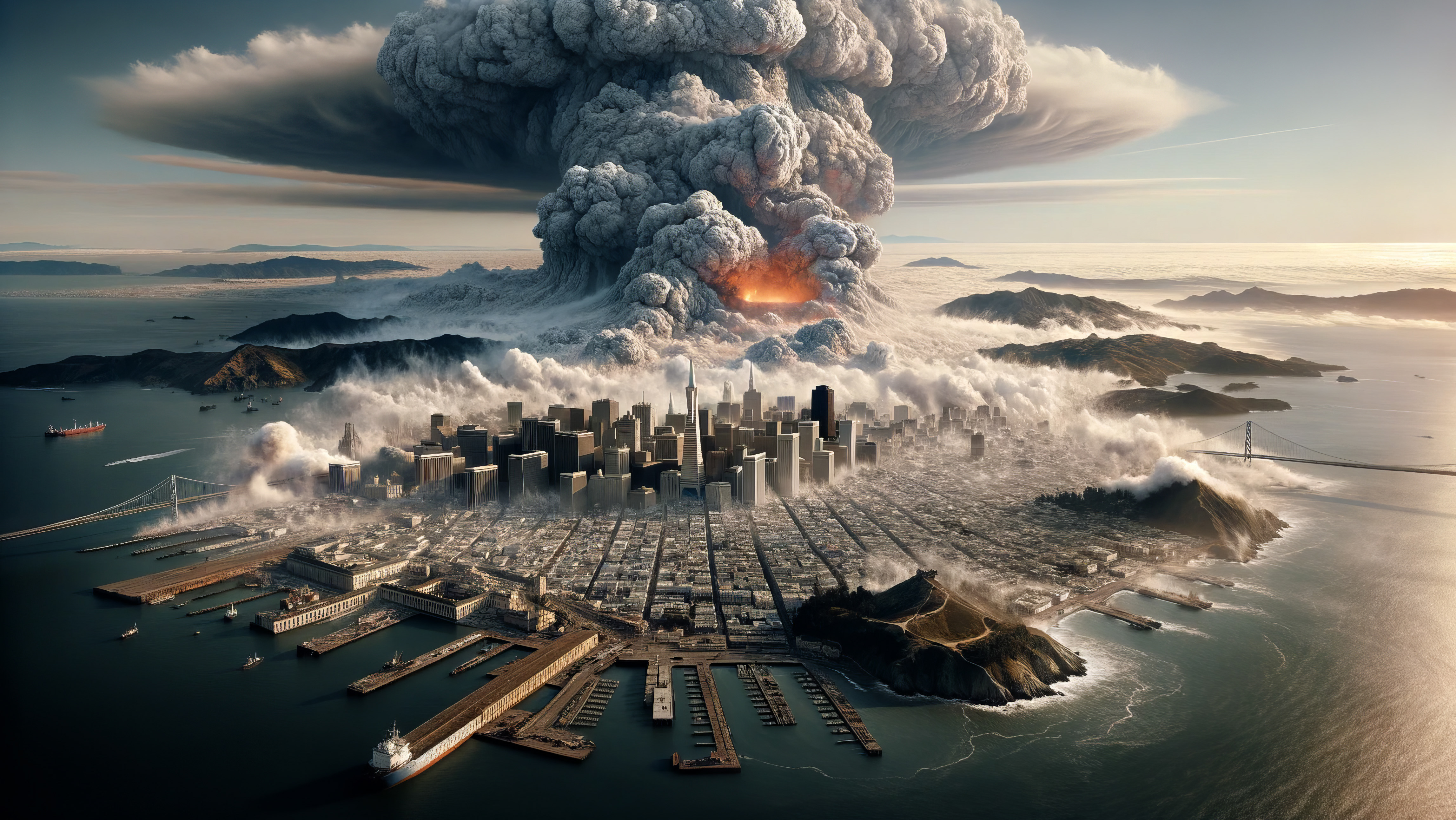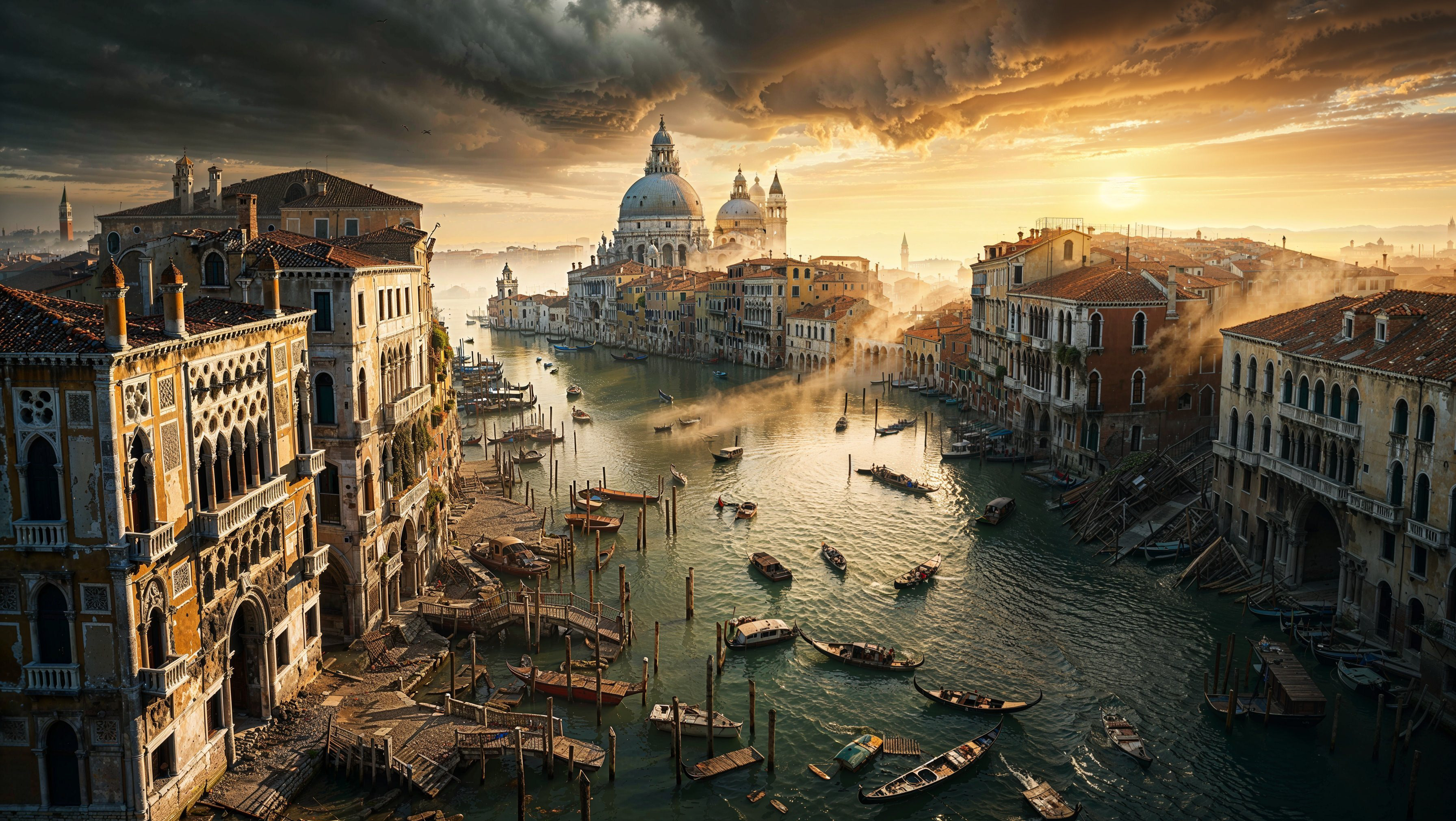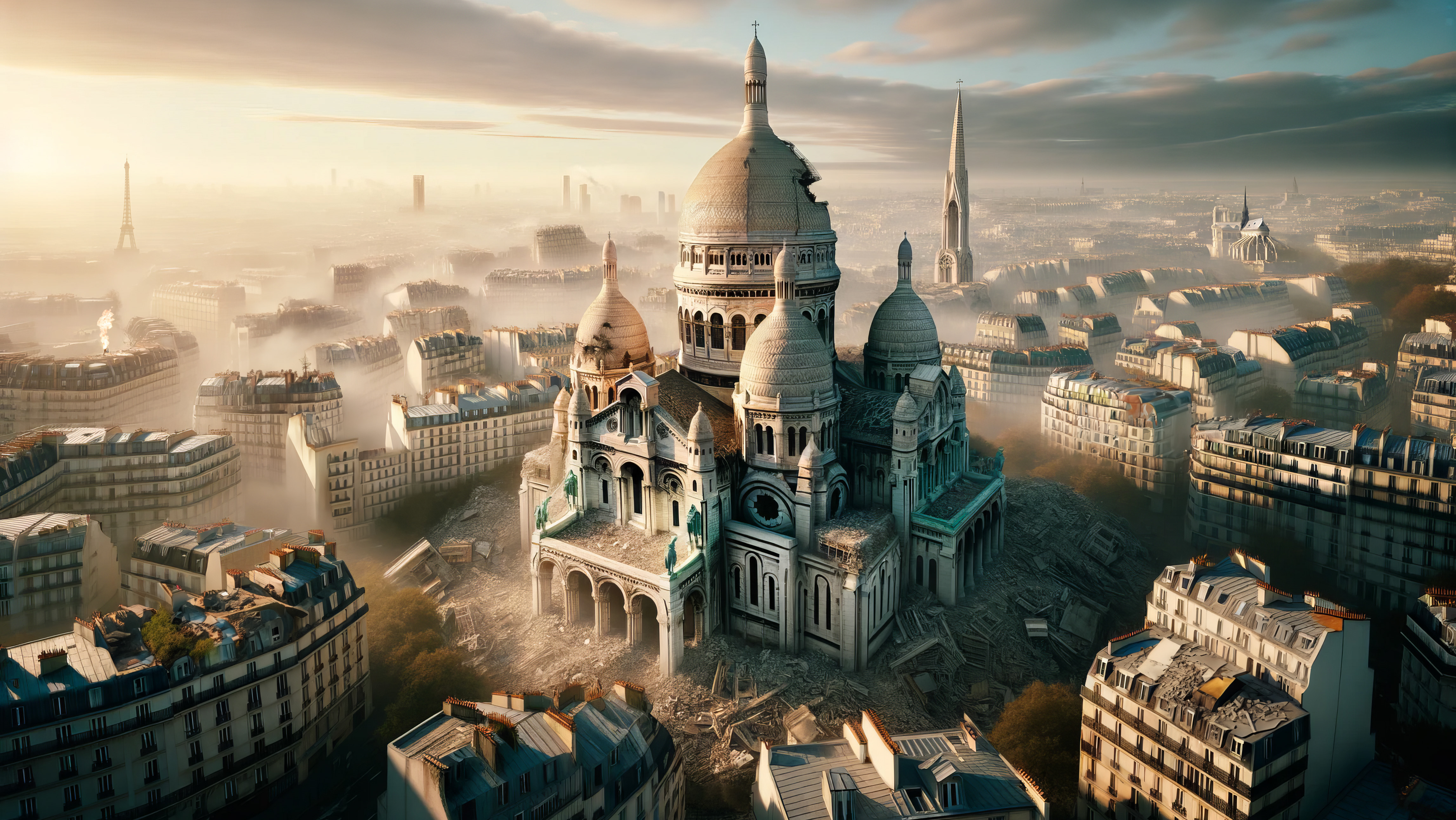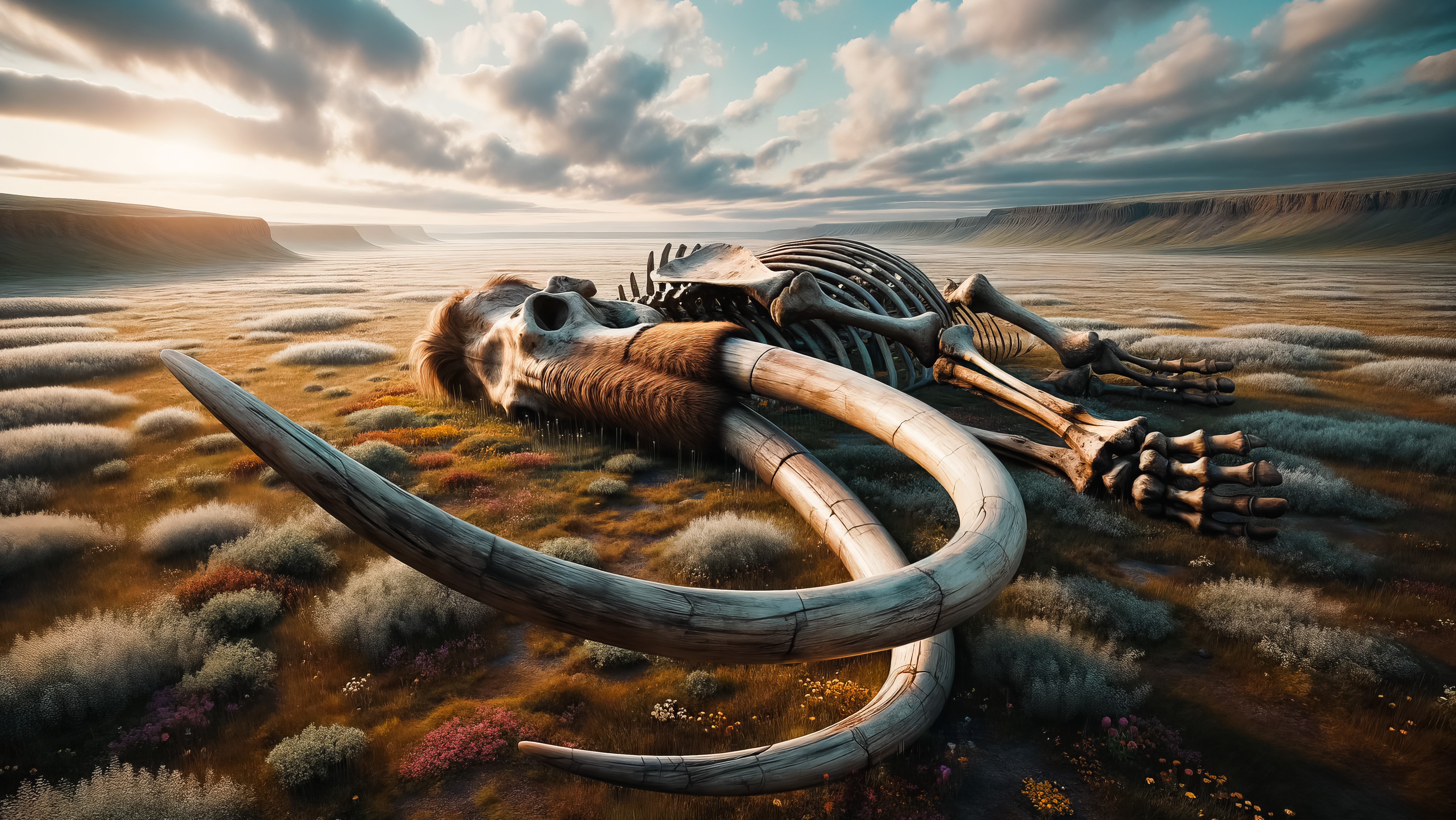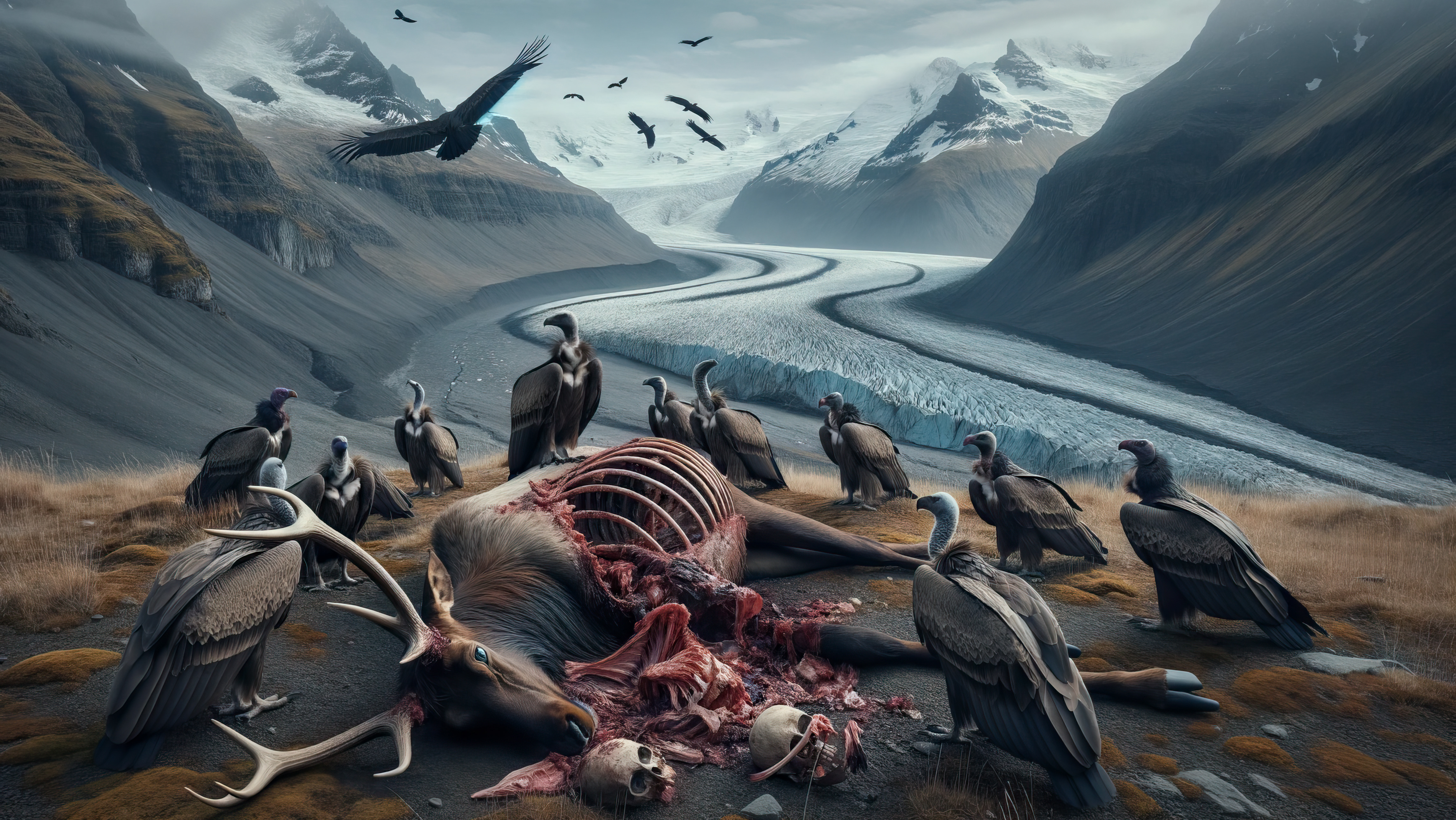Time-Worn City
After the freezing experience in London, where the Gulf Stream had turned cold, I decided to journey to a different place altogether—a place at the heart of the continent, a city that had endured much and witnessed endless events: Moscow. This city seemed to have absorbed all the contradictions of the world, embodying them in its history, architecture, and beauty.
My journey began near Saint Basil's Cathedral on Red Square. Surprisingly, despite the destruction around the area, the Moscow River had been replaced by an oily sludge mingled with mountains of garbage. Ice floes once common were now replaced with drifting debris. Bridges had collapsed, but the Cathedral itself stood nearly unscathed. At first, I wanted to enter, but the path was blocked with sand and rubble. The desert was encroaching upon the city, seeking to devour it and hide it beneath an eternal shroud.
Instead of the Cathedral, I decided to visit a nearby building, the once-famous GUM department store, perhaps the most renowned in the area. With its galleries and expensive brands, it had been a Mecca for fashionistas from all over the country. Now it lay in ruins, a relic of a bygone era. The morning sun began to heat the air sharply, signifying the increasingly desert-like climate with wild swings in temperature. I couldn't help but look for the popular ice cream that was once served here according to books. But alas, all that remained were the broken windows and crumbling walls, through which colourful rays of sunlight shone, hinting at the grandeur that once was.
A City's Struggle – Between Sand and Memory
As I walked through the remnants of the once bustling commercial hub, I reflected on the contradictions and complexities of Moscow. The city had withstood many trials and tribulations, and now it faced a new challenge: the relentless advance of the desert. The dunes were creeping in, threatening to engulf this historic place and leave only memories in the sand. Yet, amidst the decay, there were still echoes of life. The sound of a distant melody, a forgotten piece of art, a photograph half-buried in the rubble—all speaking to a city that refused to be silenced.
My exploration took me further into the streets, alleys, and boulevards of Moscow, each corner revealing another layer of the city's intricate history.
A Grand Illusion – The Bolshoi Theatre
The next morning, I ventured a short walk away to another famous landmark of the Russian capital: the Bolshoi Theatre. Sadly, it had suffered more damage than the Cathedral or the GUM. The roof was almost entirely destroyed, and the interior's elegant design was now jumbled together. It seemed as though someone had overdone the decorations, constructing a post-apocalyptic theatrical spectacle.
Nevertheless, the golden beauty of the ceilings and the grace of the walls and boxes, where people once sat watching performances through theatre binoculars, demanded attention. The stage, now open only to the elements and the universe, was challenging to navigate due to debris blocking the way. The theatre, once a symbol of cultural refinement and artistic prowess, now stood as a haunting testament to decay.
Echoes of the Past – A Museum's Forgotten Treasures
I decided to move further, to one of the city's museums, which seemed less destroyed from the outside. White and blue hues adorned the building, though it appeared to be of a more recent era. Inside, there were no specific exhibits left. The floor was covered with water and remnants of tiles and garbage. All that could be enjoyed were the interiors, and the imagination had to fill in the rest.
The hall could have been a setting from the times of Catherine the Great. I found myself lost in visions of grand balls with elegant ladies and gallant cavaliers dancing to the symphony of a bygone era. It was easy to imagine the room filled with laughter, music, and the rustling of elaborate dresses.
However, the contrast between the vivid imagery of my imagination and the current dilapidated state of the room was a stark reminder of the transience of glory. Even the greatest achievements of human civilization could fall victim to time and nature.
As I continued my exploration, each place I visited seemed to whisper stories from its past. The once vibrant cultural life, the pomp, the elegance—all were now shadows, echoes in the empty halls and abandoned streets. The city seemed to be crying out, mourning its lost grandeur yet stubbornly clinging to its identity.
The Cathedral of Christ the Saviour and a Mysterious Discovery
As I continued through the city centre, I noticed that the Cathedral of Christ the Saviour stood with relatively little damage, though the destruction around it was evident. However, I had to keep my distance. The radiation meter had been loudly beeping for the last two days, urging me to move on. But as I passed the cathedral, I discovered a peculiar phenomenon.
The ground had seemingly turned to glass or something resembling amber, known from the Russian Empire's history. I could only imagine what intense temperatures or other forces had caused this transformation. Even in catastrophe, beauty can emerge, a reminder that every event, no matter how terrible, has another side.
As the setting sun's rays touched this amber-like surface, the road seemed to glow, offering a beautiful scene that symbolized the delicate balance of destruction and creation.
Towards the City's Edge – A Universal Tale
Moving away from the city centre, I noticed the destruction becoming more pronounced. Abandoned parks were filled with decaying cars, oil, and trash, mirroring other cities' fates. No matter how unique each city's journey was, the result seemed the same for all, reflecting humanity's broader story. They had existed, had their time under the sun, but that time had passed. Their moment to fade, vanish, and dissolve had come, leaving only memories and the images I had captured.
A View from Above – Vorobyovy Gory
I contemplated climbing Vorobyovy Gory to see the city from above, but the weather began to turn. A grey, ominous fog started to envelop the city, adding an even more unsettling aura to the landscape. Glancing at the radiation meter, I decided not to linger.
Below, I caught one last glimpse of the city in the mist and noticed a lifeless tree. This tree, like an ancient being that had grown amidst the city's noise, had finally succumbed, mirroring the city's descent into oblivion. The once-thriving vegetation was now dwindling, reduced under the relentless sun and radiation, slowly turning into a desert, filled with scorpions.
It was time to leave, taking with me colourful memories of this place and a lot to ponder. Moscow, once a bustling metropolis, now stood as a ghost city, a symbol of the transient nature of human civilization. The journey had been a complex tapestry of beauty, decay, resilience, and the haunting silence of a world that had moved on.

